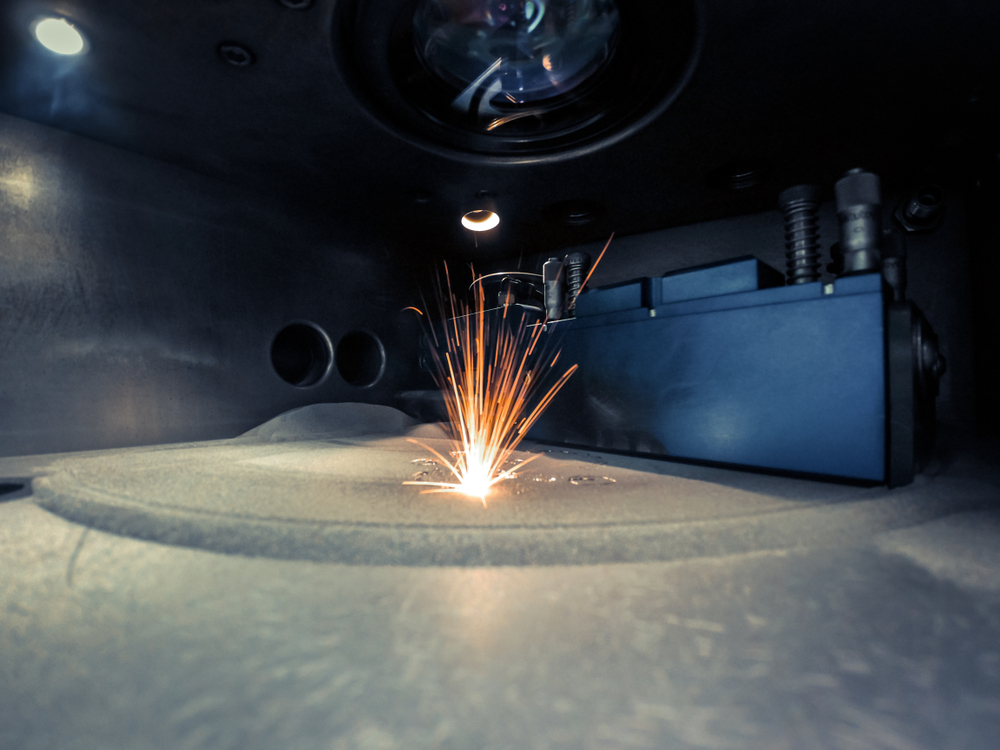
3D laser printing has been a point of focus recently, with many people arguing that it has more precision than other manufacturing techniques. Let’s look at the core differences between 3D printing and laser cutting to shed more light on this matter. Additionally, we’ll also get into the difference between diode lasers and Co2 lasers and which option holds more water.
3D Printing vs. Laser Cutting
Digital manufacturing is a world of awe that enables you to develop 2D and 3D projects right on your computer. From artistic models down to architectural designs, you can pretty much make anything at a lower cost than you would without this technology. 3D printing and laser cutting now stand as the top choices in digital manufacturing.
3D printing works by adding materials using a layering method. You start by making a 3D file using specified software and dictating the material you will use. You can 3D print metals, resins, and plastics based on the technologies you like the most. From homes to jaws to even accessories, manufacturers have perfected the art of printing a variety of items. The versatility and ease of use of the technology have further boosted the interest in its use.
This method makes it easier to build on models using additive techniques. Once you have the starting model, you can develop a complex finished product at an affordable cost. Plus, it takes less time than working from scratch. In the medical industry, 3D printing has become popular owing to its ability to create biocompatible materials such as prostheses. Where addition takes precedence over subtraction, 3D printing wins.
Laser cutting, on the other hand, comes in two forms. You can laser cut, or laser engrave items. For cutting, you need a high-powered laser beam to cut through the material to achieve your desired shape. And for engraving, all you need is to engrave the chosen form into the given material. You start with a 2D design and end up with a life-like model using cardboard, MDF, acrylic, plywood, etc. For custom items, laser cutting is the preferred option of the two.
Laser cutting is excellent when working on large items that would otherwise consume a lot of time using 3D printing. By carefully selecting the dimensions, you can develop a precisely-built model that will cost much less than it would using 3D printing. In most cases, laser cutting takes precedence where cost is a significant factor. Plus, it can work with a variety of materials.
Combining Laser Cutting and 3D Printing
Given that both options can help you create unique designs and each technology boast of something that the other doesn’t have, how about combining the two? You can use 3D printing to additively work on a project and use laser cutting to make precise cuts on the item for a perfect finish. You’ll save on money and time and increase your precision.
Which laser works best?
When it comes down to CO2 and diode lasers, making a choice can be a bit challenging. Let’s briefly consider these options.
CO2 lasers have a lot of power such that most of them boast of a 40–80-watt output on the minimum and can reach 400 watts on maximum. Such power is ideal for fast laser cutting, and where industrial works are underway, this would be a great choice. The downside to these lasers is their huge size which calls for higher space considerations. But in an industrial setting, this would not be a problem.
Diode lasers are the more portable option. However, they are much less powerful and cannot handle more than 10 watts of optical power. On the upside, they are durable and don’t need a complicated power system.
Whatever your choice of laser, you can get a vast range of laser components at Eksma Optics to help you get started. Ultimately, your choice will thus depend on how much power you need for your 3D printing and laser cutting techniques.
Subscribe to Our Email Newsletter
Stay up-to-date on all the latest news from the 3D printing industry and receive information and offers from third party vendors.
You May Also Like
Changing the Landscape: 1Print Co-Founder Adam Friedman on His Unique Approach to 3D Printed Construction
Additive construction (AC) is much more versatile than it seems, at first: as natural as it is to focus on the exciting prospect of automated home construction, there’s far more...
US Army Corps of Engineers’ Megan Kreiger on the State of Construction 3D Printing
Despite last year’s gloomy reports about the financial state of the additive manufacturing (AM) industry, there’s no doubt that we’re actually witnessing the birth of a sector rather than its...
3D Printing Webinar and Event Roundup: April 21, 2024
It’s another busy week of webinars and events, starting with Hannover Messe in Germany and continuing with Metalcasting Congress, Chinaplas, TechBlick’s Innovation Festival, and more. Stratasys continues its advanced training...
Profiling a Construction 3D Printing Pioneer: US Army Corps of Engineers’ Megan Kreiger
The world of construction 3D printing is still so new that the true experts can probably be counted on two hands. Among them is Megan Kreiger, Portfolio Manager of Additive...































